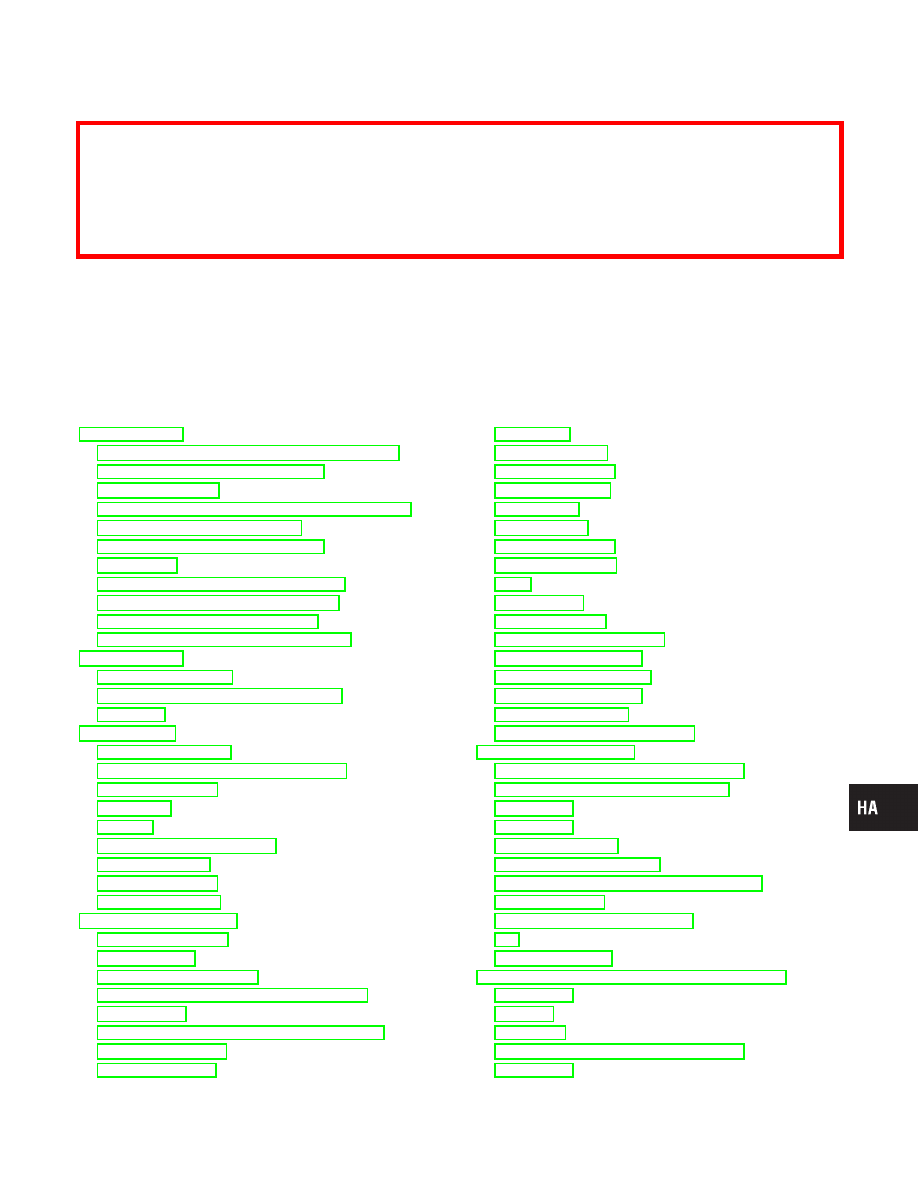Infiniti I35 (A33). Manual - part 522

HEATER &
AIR CONDITIONER
CONTENTS
PRECAUTIONS ...............................................................2
Precautions for Supplemental Restraint System
(SRS)
......................................................2
Precautions for Working with HFC-134a (R-134a) .....2
General Refrigerant Precautions .................................3
Precautions for Leak Detection Dye............................3
Identification.................................................................3
Precautions for Refrigerant Connection ......................4
Precautions for Servicing Compressor........................7
Precautions for Service Equipment .............................7
Wiring Diagrams and Trouble Diagnosis.....................9
PREPARATION .............................................................10
Special Service Tools ................................................10
HFC-134a (R-134a) Service Tools and
Equipment.................................................................. 11
DESCRIPTION ...............................................................14
Refrigeration System .................................................14
V-6 Variable Displacement Compressor....................15
Component Layout ....................................................19
Introduction ................................................................20
Features.....................................................................20
Overview of Control System......................................23
Control Operation ......................................................23
Discharge Air Flow.....................................................25
System Description....................................................26
TROUBLE DIAGNOSES................................................27
Component Location..................................................27
Circuit Diagram ..........................................................29
Wiring Diagram - A/C, A - ..........................................30
Auto Amp. Terminals and Reference Value...............34
Self-diagnosis ............................................................36
How to Perform Trouble Diagnoses for Quick
and Accurate Repair ..................................................46
Operational Check .....................................................47
A/C System................................................................50
Mode Door Motor.......................................................53
Air Mix Door Motor ....................................................60
Intake Door Motor......................................................63
Blower Motor..............................................................66
Magnet Clutch............................................................75
Insufficient Cooling ....................................................81
Insufficient Heating ....................................................89
Noise..........................................................................90
Self-diagnosis ............................................................91
Memory Function .......................................................92
ECON (ECONOMY) Mode ........................................93
Ambient Sensor Circuit..............................................93
In-vehicle Sensor Circuit............................................97
Sunload Sensor Circuit............................................100
Intake Sensor Circuit ...............................................104
Air Mix Door Motor PBR Circuit ..............................106
SERVICE PROCEDURE..............................................107
HFC-134a (R-134a) Service Procedure ..................107
Maintenance of Lubricant Quantity in
Compressor .............................................................109
Compressor ............................................................. 112
Compressor Clutch .................................................. 112
Heater Unit (Heater Core) ....................................... 116
Blower and Cooling Unit (A/C Evaporator) ............. 117
Refrigerant Lines ..................................................... 118
Fluorescent Dye Leak Detector...............................122
Belt...........................................................................123
In-cabin Microfilter ...................................................123
SERVICE DATA AND SPECIFICATIONS (SDS) .......124
Compressor .............................................................124
Lubricant ..................................................................124
Refrigerant ...............................................................124
Engine Idling Speed (When A/C is ON) ..................124
Belt Tension .............................................................124
GI
MA
EM
LC
EC
FE
AT
AX
SU
BR
ST
RS
BT
SC
EL
IDX